Culture
Roman mosaic floor- found!
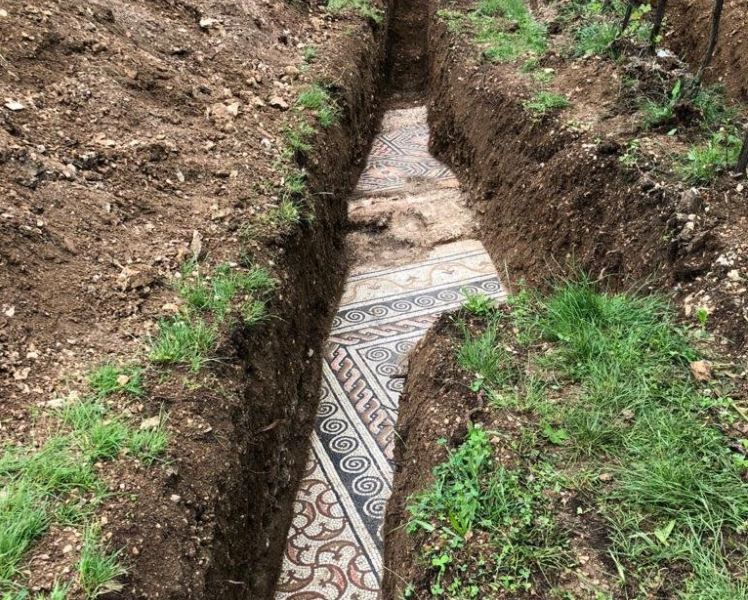
A sampling of the unearthed mosaic.
Image courtesy of: Smithsonian Magazine
A perfectly preserved ancient Roman mosaic floor was recently discovered near Verona, Italy. Early estimates believe that this pristine “architectural treasure” may date back to the 3rd century A.D. What makes this even more exciting is that the find comes almost a century later than remains of a villa were unearthed nearby, in a hilly area above the town of Negrar di Valpolicella. The site on which the Roman villa was discovered in 1922 was left abandoned soon after the initial discovery. There are strong reasons to believe that the path of multi-colored and intricately patterned tiles once formed part of the villa’s foundation.
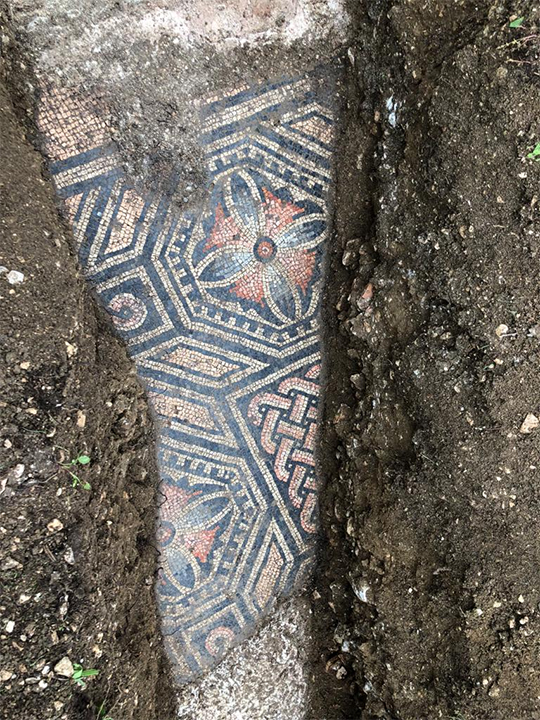
Only a partial area of the design is visible. The repeating patterns of geometric shapes are in colors of burnt red, green, and black.
Image courtesy of: ArtNet
After the discovery in 1922, the abandoned site sat undisturbed until last summer when the Superintendent of Archaeology, Fine Arts and Landscape of Verona resumed digging. The team was forced to suspend their work in February when the coronavirus pandemic hit Italy.
Last spring, just one week after returning to work, the mosaic was found a few meters beneath a row of vines. Negrar di Valpolicella wrote on the town’s Facebook page, “After countless decades of failed attempts, part of the floor and foundations of the Roman villa located north of Verona, discovered by scholars a century ago, has finally been brought to light. The superintendent will now liaise with the owners on the most appropriate ways of making this archaeological treasure, which has always been hidden beneath our feet, available and accessible.”
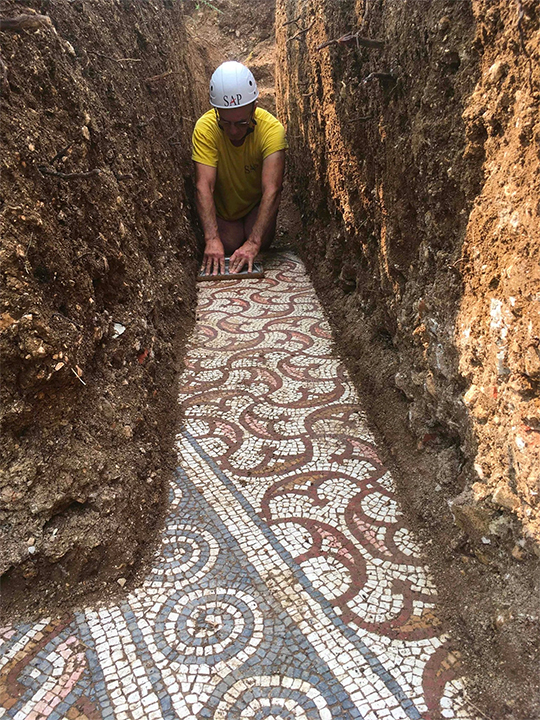
The impressive quality of the mosaic suggests that the villa’s owner was well off; possibly, he was a local official or an associate of the Imperial entourage.
Image courtesy of: The New York Times
The town’s mayor, Roberto Grison told the local newspaper L’Arena, “We believe a cultural site of this value deserves attention and should be enhanced. For this reason, together with the superintendent and those in charge of agricultural funds, we will find a way to make this treasure enjoyable.”
Since the remains were found in an active vineyard, the proper administrators must liaise with the property owners to ensure that their plot stays as undisturbed as possible. Administrators hope that eventually, the mosaic will be accessible to the public.
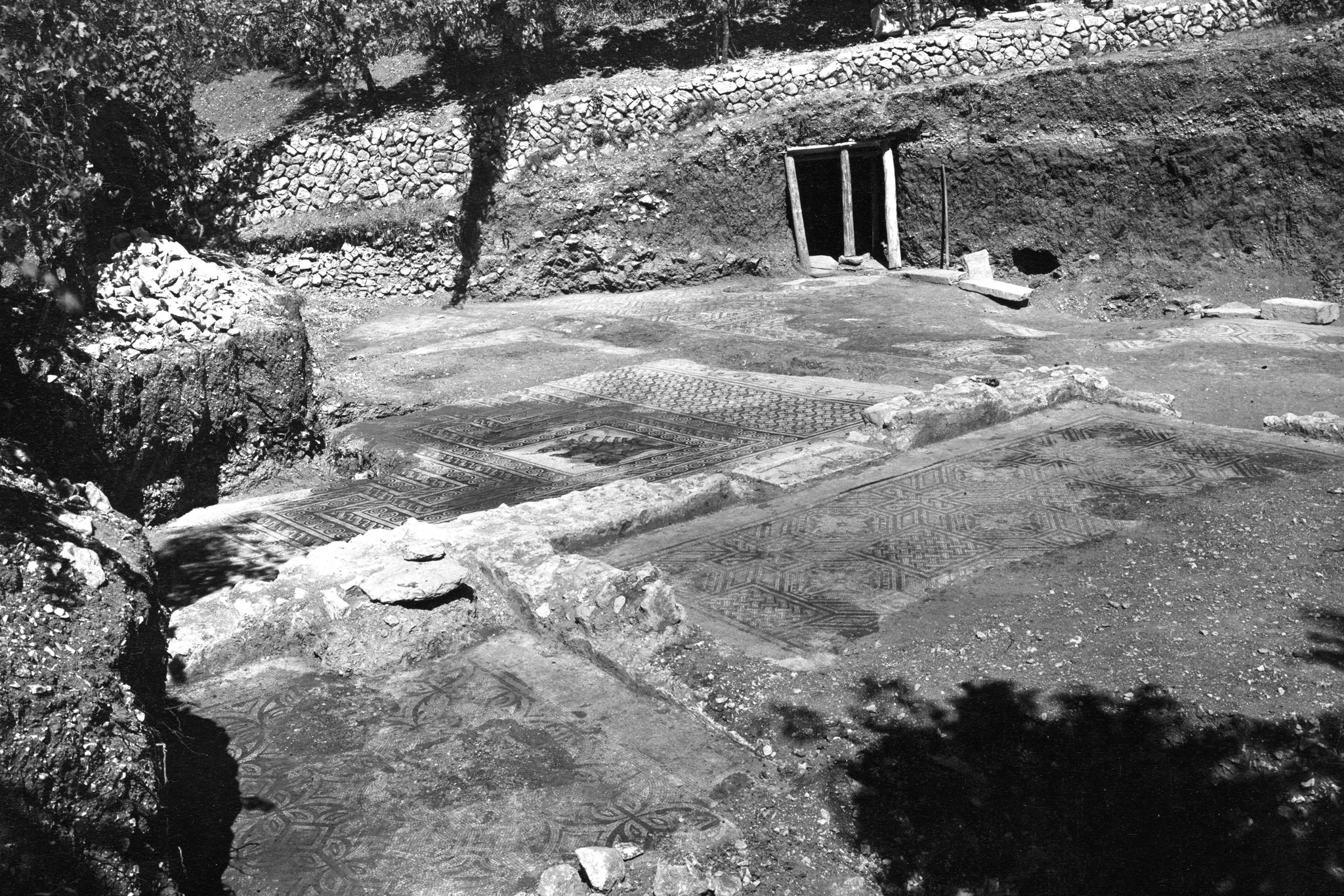
A photograph from the original excavation, 1922.
Image courtesy of: The New York Times
Gianni de Zuccato, the state archaeologist leading the excavation, has been leading the state-funded effort for the past year. The hope was to find the long-lost mosaics; on May 18th, archaeologists hit “pay dirt,” uncovering a part of the mosaic that Mr. de Zuccato recognized from the 100-year-old photographs he had practically memorized!
The archeologist said (courtesy of The New York Times), “It was one of the most moving experiences of my life,” he said of the moment when the team at the site unearthed a strip of mosaic, between three and five feet underground. “I had the sensation of entering a time machine, of coming into contact with reality that’s long gone, so many centuries ago, and yet having the imprint of humankind. I cannot help but think of the people who laid the mosaics, of the people who lived there — not only the aristocrats, but the dozens of servants and farmhands who lived on the land. That deeply moves me.”
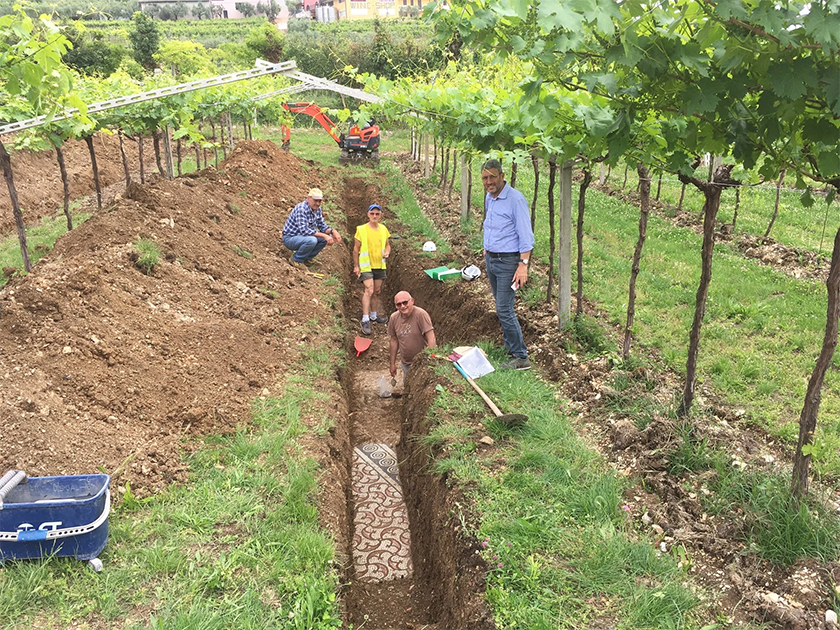
At center right, Mr. Gianni de Zuccato with other workers at the excavation.
Image courtesy of: The New York Times
When the vineyard changed hands, an official archaeological campaign excavated an area of roughly 3,000-square-feet that uncovered mosaics from at least five other rooms. The dig was properly photographed and documented, but the mosaic was not removed because legitimate funding was never facilitated and the restorer procrastinated. Mr. de Zaccato said, “The owner of the field grew impatient and decided to rebury the mosaics and farm the land. He planted a vineyard, and it was all forgotten.”
The area’s farmers, however, did not let the memory of the buried mosaic die. Thankfully so!

